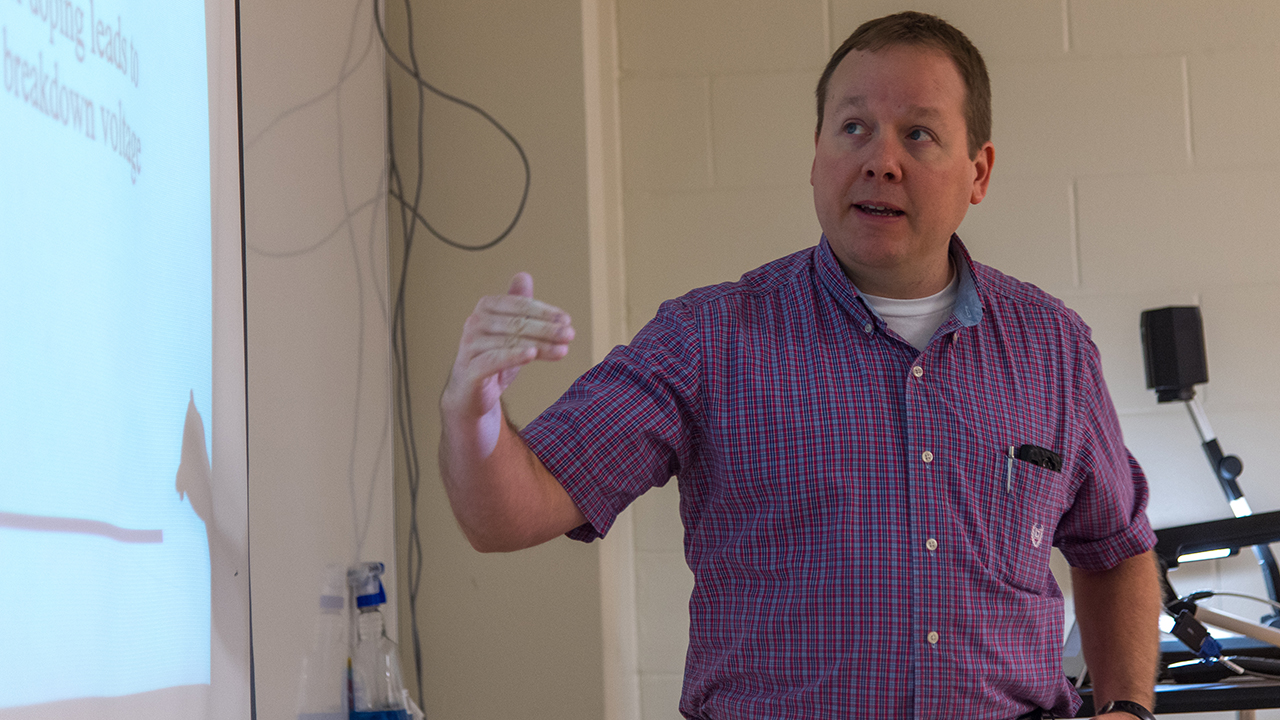Expert Answers: Auburn researcher explains how quantum encryption works
Published: Jul 1, 2020 10:03 AM
By Chris Anthony
The rise of quantum information processing has the potential to vastly improve communication security by offering next-generation encryption technology. On Monday, June 15, a team of Chinese researchers published the latest results of their work in this area, highlighting how they used quantum physics to send a “key” to encrypt and decrypt messages from one ground station to another about 700 miles away through a satellite. This technique is known as quantum key distribution, or QKD. Mark Adams, associate professor of electrical and computer engineering in Auburn’s Samuel Ginn College of Engineering, is a researcher in the Alabama Micro/Nano Science and Technology Center, who works in the area of quantum information processing, including QKD. Adams explains how QKD works and highlights Auburn’s role in advancing this technology.
Quantum physics can be tough to understand. How exactly does it work and open the door to something like QKD?
Quantum is somewhat nonintuitive so it can be difficult to understand; however, one need not understand everything about quantum mechanics to leverage the unique properties that quantum provides. It is these non-classical properties, entanglement and superposition, that allow us to develop QKD, quantum computing and quantum metrology. As engineers we focus on harnessing the enhancements quantum systems provide over classical systems to improve detection of signals, establish more secure communications, or fundamentally change how computation is performed.
How is QKD an upgrade over the encryption schemes that are used today?
Typical encryption schemes today rely on mathematical algorithms called ciphers to encrypt or decrypt information. In each case there is a key which is used to perform the encryption and the length of key (number of bits) can be increased to make the encryption more difficult to break. A bad actor, given classical computing, may be able to recover the key given enough computational power and time. Unfortunately, with the development of quantum computing, the time to recover those keys has been drastically reduced thus creating a security vulnerability. QKD attempts to alleviate those concerns by creating a shared random key that is only known to the two parties sharing information and cannot be recovered by a bad actor due to the properties of quantum physics. QKD also can alert users that an eavesdropper is present and the key may have been intercepted thus providing additional security.
China has demonstrated this technology before. What’s the significance of this particular demonstration?
China launched the Micius satellite in 2016 as part of its Quantum Experiments at Space Scale research project. The Micius satellite and ground stations located in China and Europe are part of a QKD testbed. The Chinese have now demonstrated two distinct variants of QKD from space: BB84 which uses weak coherent pulses and E91 which uses entangled photons. The demonstration of a full communications link from space based on entangled photons is a remarkable achievement. It has been shown on Earth in many laboratory environments but the implementation of an entangled free-space optical link from low earth orbit is a significant step forward.
China appears to be leading the way in this area. How is the U.S. trying to catch up?
The Chinese government has invested significant resources into quantum, especially quantum communication and sensing, over the past decade. The U.S. has realized that although we may lead the world in quantum computing due to our technological industry base, we need to do more. Congress passed the National Quantum Initiative Act in December 2018 to provide additional research funding for quantum technology.
You are part of a team that is also building a QKD system. What distinguishes your QKD work from what the Chinese researchers have done?
We currently have an effort sponsored by the University Nanosat Program (UNP), which focuses on miniaturizing a QKD system so that it can be flown on a CubeSat. The Micius satellite is a full size 631-kilogram (1,391.1-pound) satellite. We’d like to provide QKD from a 12U (23-cm by 24-cm by 36-cm), 24-kilogram (52.9-pound) small satellite. Our initial project is focusing on the use of the BB84 scheme (using weak coherent pulses), but we are actively exploring how to build fully entangled QKD sources for small satellites. We expect that the flight selection review for our UNP mission will occur in spring of 2021 with a launch date sometime in 2023-2024.
Media Contact: , chris.anthony@auburn.edu, 334.844.3447


